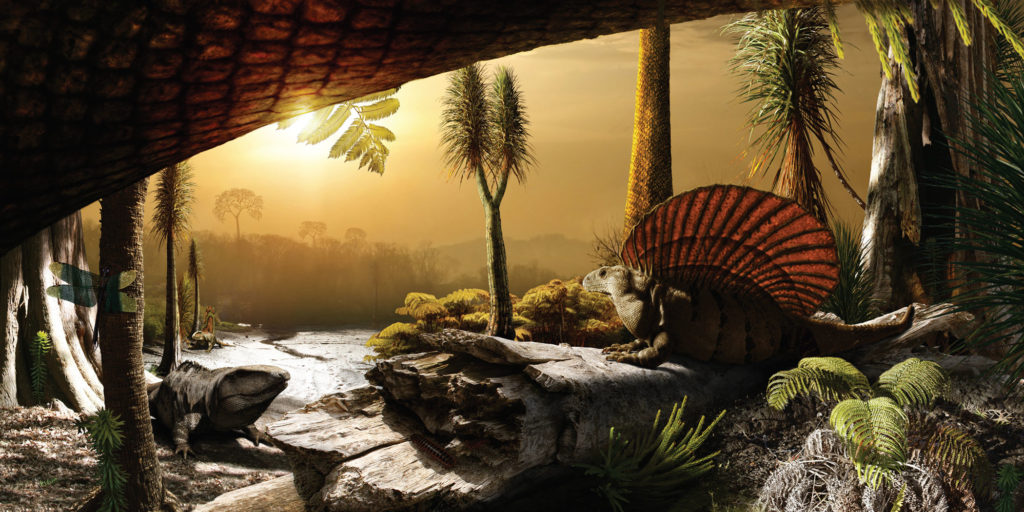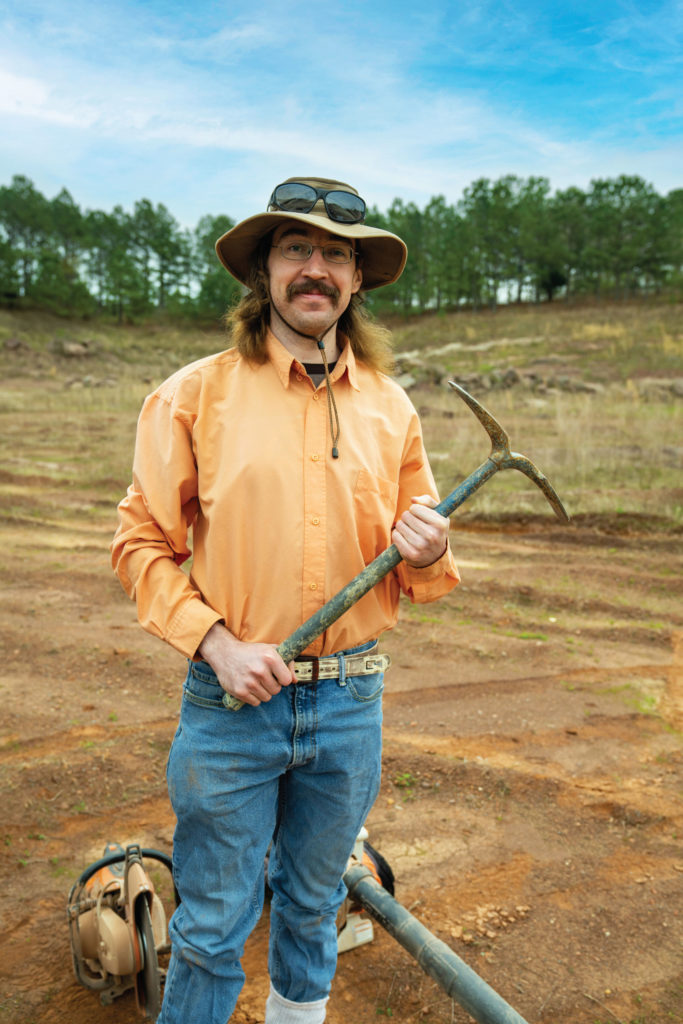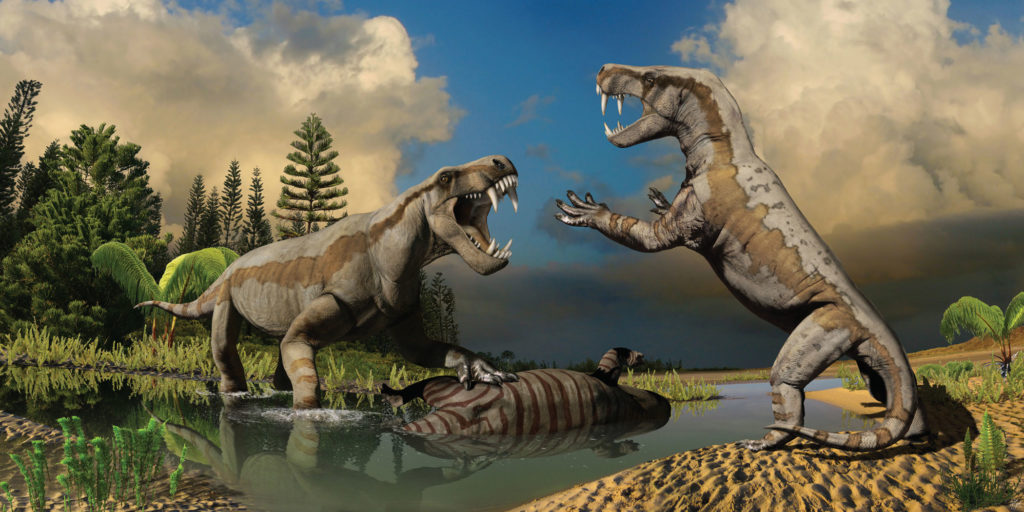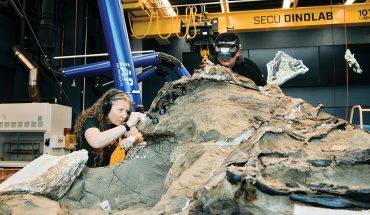Some 290 million years ago, giant dragonflies and saber-toothed mammals ruled the earth — then a mass extinction took them out.
by Hampton Williams Hofer | illustrations by Julius T. Csotonyi
The second floor of the North Carolina Museum of Natural Sciences is full of monsters: saber-toothed mammals the size of bears, dragonflies with 2-foot wingspans and land predators with massive, sail-like fins. These species all dominated planet Earth some 290 million years ago, part of the ancient group called Permian Monsters that thrived before the largest mass extinction in our planet’s history wiped them out. The dinosaurs — who get a lot more airtime — then took their place.
The Permian Monsters are the stars of Life Before Dinosaurs, a special exhibition at the museum through Sept. 4 that features full-scale, interactive models of the creatures, like a motion-activated model Titanophoneus (“titanic murderer”) that turns its head and opens its mouth to reveal powerful, bone-cracking canines. With shadow play from LED lights and realistic greenery, all the creative work of the NCMNS exhibit team, it’s like stepping into another world.
Dr. Christian Kammerer, the museum’s research curator of paleontology, has traversed the globe hunting Permian fossils and has discovered numerous rare specimens. While visitors to the NCMNS marvel at whale skeletons and rare gemstones, the paleontologist may be just one county west, bent over a round saw, cutting carefully into the roughly 230-million-year-old Triassic rock that runs straight through the middle of North Carolina.
The Life Before Dinosaurs exhibit is especially meaningful to Kammerer in that it has made his work in obscure prehistoric life more accessible to the general public. “Most of these animals have no close living relatives, and just trying to describe what they are can be a challenge,” Kammerer says. For example, one of the major groups of Permian creatures, dicynodonts, were the most abundant herbivores of their day, but there is nothing alive today quite like them. “When forced to describe them, I say they are kind of like pigs with turtle beaks and walrus tusks, but that is very imprecise. So it’s hard to get across,” Kammerer says. “It’s much easier to talk about them when folks can just see their skeletons and life restorations.”
The dicynodonts Kammerer describes are actually our ancestors. “They’re not just long-dead weirdos, but part of our own history as mammals,” Kammerer says. “They help us to understand our far-distant origins.” He notes that rich fossil records of the Permian Monsters show the gradual accumulation of mammalian features in creatures that, if you saw them alive, you would probably think of as reptiles. “But if you look carefully at their teeth and skull, you could see things like canine teeth that are decidedly mammalian,” he says.
The exhibit also features stunning murals by Julius T. Csotonyi that show a vivid and volatile Earth where Permian Monsters ruled: red skies, towering ferns, erupting volcanoes. The team at the NCMNS amped up the traveling exhibit for our local audience. They took the motion-activated models of the animals and fiddled with the animatronics to make their movements bigger, wider and more awe-inspiring. They added louder sounds and built their own sets and models of plants and backgrounds that stage the scenes dramatically. In addition, the museum made each panel throughout the exhibit bilingual, with information in both English and Spanish.
For Kammerer and the NCMNS staff, Life Before Dinosaurs is a chance to redefine how people think about the prehistoric world. “I want people to know that there is a whole world that existed long before the dinosaurs ever evolved, which was full of equally incredible organisms,” Kammerer says. At the end of the exhibit is a wall of photos that includes Kammerer in the field, surrounded by rocks and tools, his jeans covered in dust like a scene from Jurassic Park. He has tracked Permian Monsters from Russia to South Africa, uncovering and naming numerous new species: the Mobaceras (a carnivore with a skull of bony horns, which he discovered in Zambia), the Rastodon (an herbivore with a hole in its skull containing a light-detecting organ known as a “third eye,” which he found in Brazil) and the Bulbasaurus (which may or may not be named for a Pokémon).
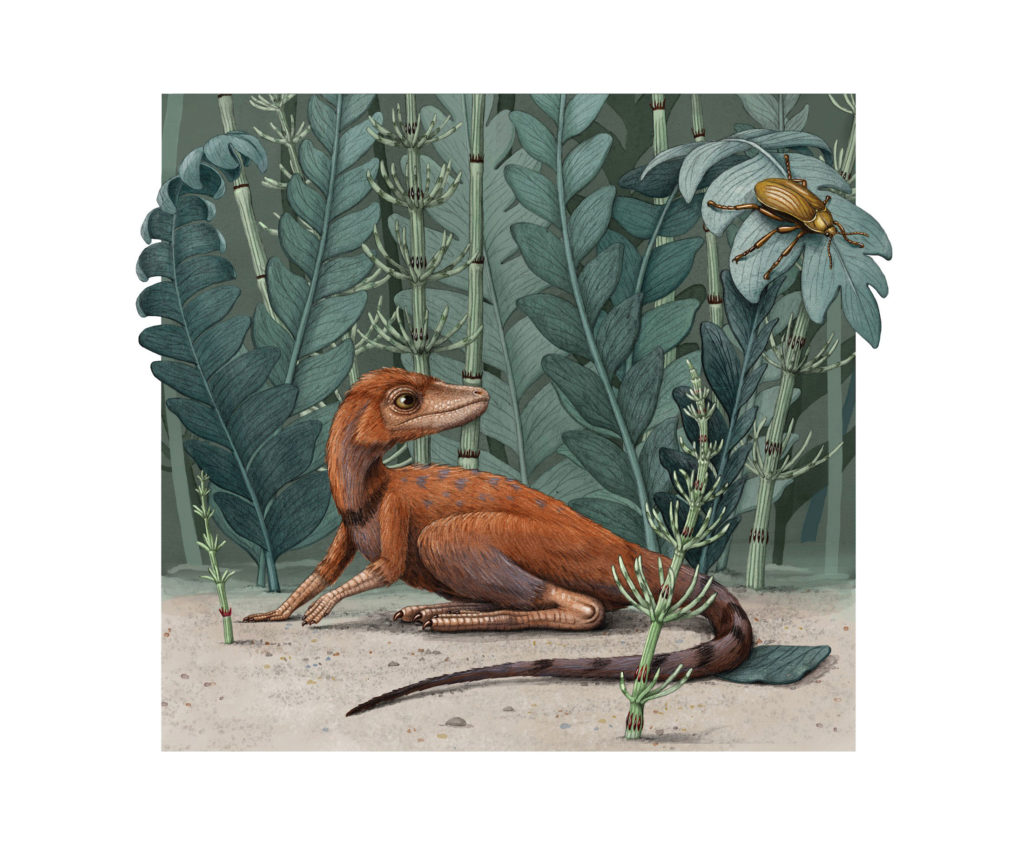
Life Before Dinosaurs winds through realistic creature replicas, fossils in casings, bones, murals and hands-on digging features, ending in a gift shop of carefully curated Paleozoic coloring books and otherworldly stuffed animals. For the roughly 1 million yearly visitors to the museum, the exhibit shows off more than just its subjects, but also the caliber of the institution’s paleontologists and staff. “Hopefully,” Kammerer says, “visitors come away with an appreciation for the diversity and majesty of some of these creatures.”
Just as much, Kammerer means for the exhibit to serve as a reminder of the end-Permian mass extinction, which he considers the worst crisis in the history of life on Earth. “The mechanisms driving that extinction are very similar to what we’re starting to see now with global warming,” he says. “Our current changes in global climate are unprecedented in human history, so we should be looking into the deep past for equivalents.” He hopes that the exhibit will be a call to action, an opportunity to reformulate how people understand existence on our planet and the way life has evolved — and what lies ahead.
This article originally appeared in the August 2022 issue of WALTER Magazine.

